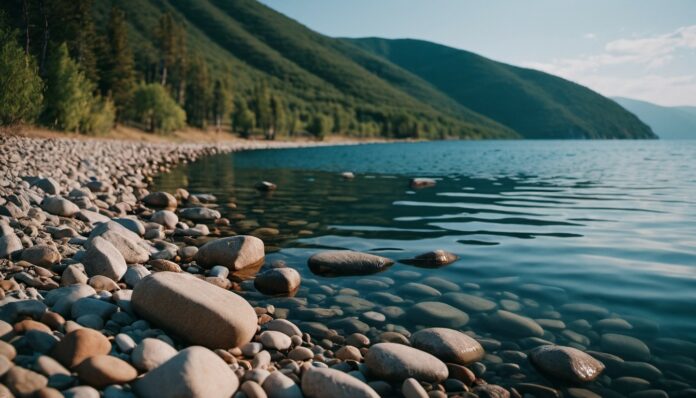Lake Baikal, located in Siberia, Russia, is one of the most fascinating and beautiful lakes in the world. It is known for its stunning natural scenery, unique wildlife, and incredible depth.
Deepest and Oldest Lake
Lake Baikal holds the title of being the deepest lake in the world, reaching a depth of about 1,642 meters (5,387 feet). It is also the oldest, estimated to be around 25 million years old. These features make it a unique and important natural wonder.
Crystal Clear Waters
The water in Lake Baikal is known for its exceptional clarity. In the winter, visibility can reach up to 40 meters (131 feet) down, allowing for a breathtaking view of the underwater world. This clarity is due to the lake’s low levels of mineral content and the presence of microorganisms that filter the water.
Unique Wildlife
Lake Baikal is home to a wide variety of plant and animal species, many of which are found nowhere else on Earth. One of the most famous inhabitants is the Baikal seal, or nerpa, the only freshwater seal species in the world. The lake also hosts more than 2,500 species of plants and animals, with many new species still being discovered.
Rich Cultural History
The region around Lake Baikal has a rich cultural history, with indigenous peoples such as the Buryats and Evenks living in the area for centuries. The lake is also a significant spiritual site, with many local legends and folklore surrounding its mystical properties.
UNESCO World Heritage Site
In recognition of its natural and cultural significance, Lake Baikal was designated a UNESCO World Heritage Site in 1996. This status helps protect the lake and its surrounding areas, ensuring that its unique beauty and biodiversity are preserved for future generations.
Interesting Facts About Lake Baikal
- Lake Baikal contains about 20% of the world’s unfrozen freshwater.
- The lake is fed by 330 rivers and streams, but only one river, the Angara, flows out.
- During the winter, the lake’s surface freezes over, creating a thick ice layer.
- The ice on Lake Baikal is so clear that you can see fish swimming below.
- Lake Baikal is often called the “Galapagos of Russia” due to its rich biodiversity.
- The Baikal Rift Zone, where the lake is located, is still active and slowly spreading apart.
- The lake’s water temperature varies, reaching up to 15°C (59°F) in summer.
- There are around 27 islands in Lake Baikal, with Olkhon Island being the largest.
- The lake has more than 1,700 species of plants and animals, two-thirds of which cannot be found anywhere else.
- Baikal’s endemic fish species include the golomyanka, a unique transparent fish.
- The lake’s waters are considered some of the purest in the world.
- In the winter, the ice forms unique patterns and bubbles due to methane gas.
- Lake Baikal is a popular destination for ecotourism and scientific research.
- The lake’s depth is greater than the height of the Eiffel Tower.
- Baikal’s age makes it a valuable site for studying ancient climates and ecosystems.
- The lake’s basin contains around 20% of the world’s total unfrozen freshwater reserve.
- Baikal seals are believed to have migrated to the lake from the Arctic Ocean.
- The lake’s name, Baikal, comes from the Turkic word “Bai-Kul,” meaning “rich lake.”
- The water in Lake Baikal is so clean that it is almost drinkable without treatment.
- Lake Baikal has its own weather system, influenced by its vast water volume.
- The lake is surrounded by mountains, adding to its stunning scenery.
- Local legends tell of a dragon living in the depths of Baikal.
- The lake’s water level fluctuates throughout the year due to inflow and outflow.
- Lake Baikal is a major stop on the Trans-Siberian Railway route.
- The lake’s surface area is about 31,500 square kilometers (12,200 square miles).
- During the Soviet era, the lake was a site for environmental studies and research.
- The surrounding area is home to numerous hot springs and thermal vents.
- Baikal’s ecosystem is very fragile and sensitive to environmental changes.
- The lake’s unique flora and fauna make it a focus of many biological studies.
- Efforts to protect Lake Baikal include monitoring pollution levels and regulating fishing activities.
Lake Baikal remains a natural wonder, drawing scientists, tourists, and nature enthusiasts from around the world. Its unique characteristics and breathtaking beauty make it a priceless treasure worth protecting.
